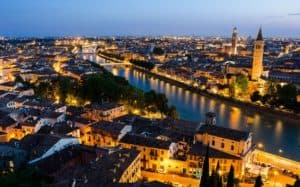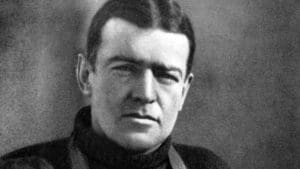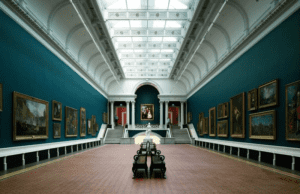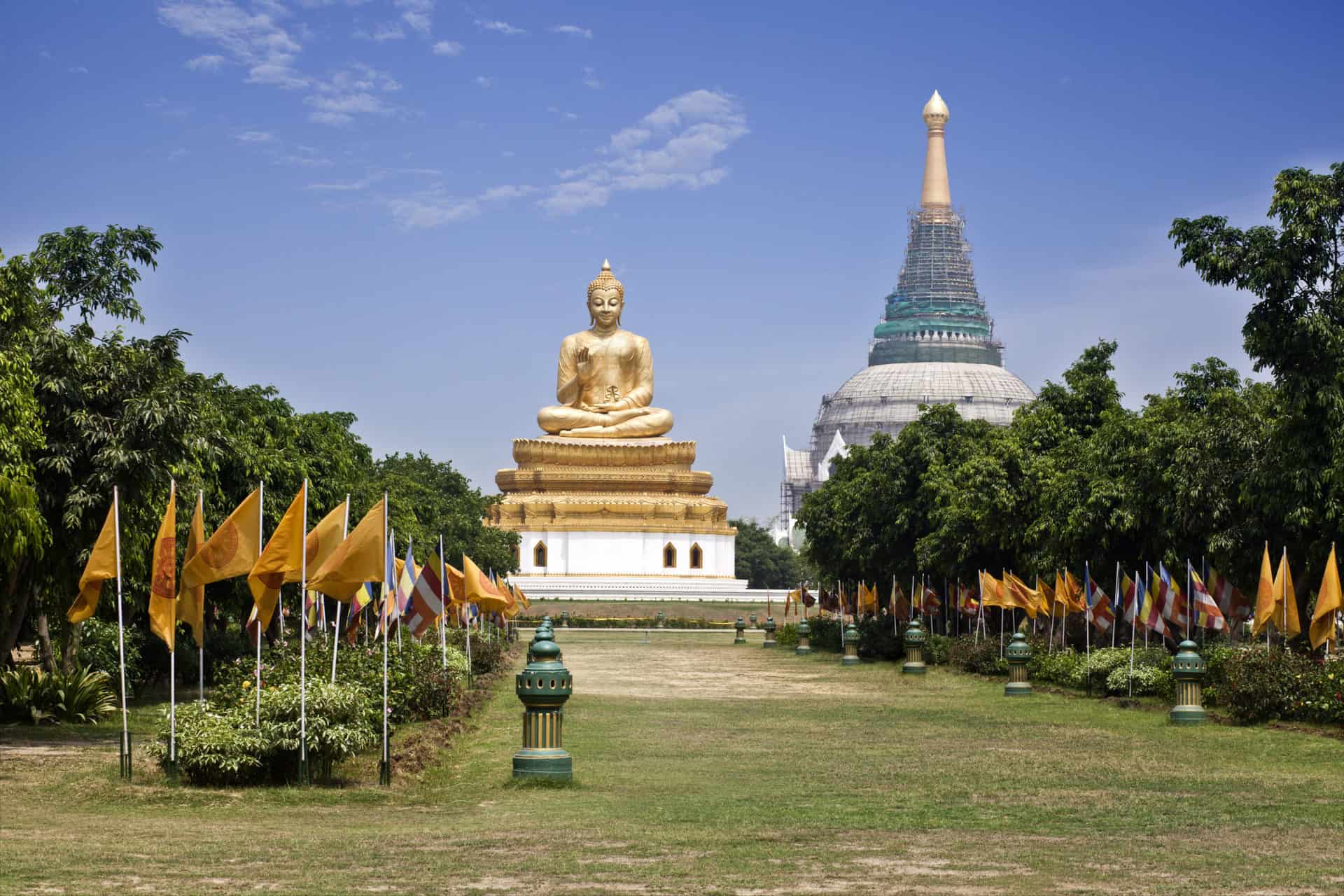The Gypsies of Europe: Unveiling the Tale of Melody, Movement, and Misperceptions

Updated On: April 15, 2024 by Maha Yassin
The Gypsies of Europe often referred to as the Roma, weave a narrative rich in music, migration, and profound misunderstanding. Their story begins with their ancestral roots in India, leading to a diaspora that saw their culture spread through the Middle East into Europe. Their journey is not just a physical trek across continents; it’s also a metaphorical odyssey through a landscape of social acceptance and prejudice. The Roma have contributed significantly to European culture, particularly through their distinctive music and craftsmanship, yet they have faced, and continue to face, substantial challenges and discrimination.
As Europe’s largest ethnic minority, the Roma’s imprint on the continent is indelible. Their population, estimated at 11 million, is spread across various countries, each subgroup of Roma maintaining its unique social structures and lifestyles. Their economic contributions have been substantial, particularly in fields like metalwork, recycling, and market trading. Despite these contributions, the Roma people have often been misunderstood and misrepresented, which has led to a complex relationship with the non-Roma societies among which they live. Political and social advocacy efforts aim to bridge these gaps, promoting understanding and integration.
The Gypsies’ story is one of resilience; their enduring spirit is reflected in their language, religious practices, and especially their contribution to the arts. Despite modern challenges—including dispersal and the quest for improved prospects—the Roma’s identity remains vibrant, a testament to their rich historical and cultural tapestry.
The Historical Journey of The Gypsies of Europe

The Roma, with their diverse culture and deep historical roots, have journeyed from the Indian subcontinent to every corner of Europe, creating a mosaic of subethnic groups. Their history is a chronicle of movement and a tale of survival and cultural exchange.
Origins and Early Migrations
Romani history traces back to their departure from northwest India. Scholars suggest that Roma or Romani people left the Indian region of Rajasthan around the 1st millennium CE, passing through Persia and then into Europe. This migration commenced a millennium-long diaspora that dispersed Romani groups across various regions, where they developed distinct identities.
Romani Groups Across Europe
Romani populations are diverse, with groups like the Sinti in Western Europe and the Kalé in the Balkans. Each group adapted to its environment, reflected in the varied dialects and traditions. The Roma have contributed significantly to the cultural tapestry of European societies, particularly through their music, which resonates throughout the continent.
The Roma in Medieval Times
During the Middle Ages, Romani communities faced significant challenges. Despite the challenges, the Roma endured and continued to play an integral role in Europe’s cultural and economic life. Their journey through history is marked by perseverance in the face of adversity and the ability to adapt while maintaining a distinct identity.
Cultural Tapestry
Exploring the Gypsies’ intricate cultural tapestry reveals a vibrant confluence of language, arts, and traditions. Their collective heritage is marked by a depth and complexity akin to a richly woven fabric.
Language and Dialects
Romani, the traditional language of the Gypsies, indicates their migration patterns, featuring many evolved dialects. Each variant embodies the unique journey of Romani communities, sometimes borrowing from the languages of regions they’ve traversed. Preserving Romani remains a vital aspect of their cultural identity despite its fragmentation.
Music and Arts
Gypsy music, a cornerstone of their cultural expression, encapsulates the soul of their itinerant lifestyle. Often characterised by vibrant rhythms and poignant melodies, it has influenced many genres, such as flamenco. Renowned for their musicians and craftsmen, they have contributed significantly to the musical tapestry of Europe. The art of dance is also paramount, with movements that narrate stories of their heritage and ongoing journey.
Customs and Traditions
At the heart of Gypsy culture lie customs and traditions steeped in their nomadic legacy. These practices, from their distinctive celebrations to daily rituals, continue to be passed down through generations. While outsiders sometimes misunderstand these customs, they remain integral to the Romani sense of community and identity.
Social Structures and Lifestyles

The social tapestry of the Roma people is rich and varied, with differing lifestyles centred around family and community. These encompass both nomadic traditions and sedentary practices.
Nomadic vs Sedentary Livelihoods
Historically, many Gypsies adopted a nomadic way of life, travelling in caravans or vardos. This mobility allowed them to offer services across regions, such as seasonal work or craftsmanship. Some continue this lifestyle, albeit in modern vehicles, due to economic needs or cultural preservation. Conversely, a significant proportion of Roma have settled into sedentary communities. These range from established neighbourhoods within cities to segregated areas on the outskirts.
Family and Community Dynamics
For the Roma, family and clan connections are the backbone of social structure. Extended family groups often live close to one another, maintaining strong supportive networks. Respect for elders and patriarchal authority is a hallmark of these tight-knit communities. Meanwhile, the broader community may come together for events like weddings or religious ceremonies, reinforcing communal ties and cultural identity. Despite challenges, they have preserved vibrant traditions, like music, which plays a central role in community gatherings.
Economic Contributions and Occupations

The Roma people of Europe have significantly contributed to the economies of their resident countries through skilled craftsmanship and vibrant cultural expressions. Predominantly known for their trades and artistic talents, the Roma have harnessed these professions not only for sustenance but also to leave a lasting cultural impact.
Craftsmanship and Trades
Historically, many Roma found occupation as craftsmen and artisans, mastering trades requiring great skill and dedication. Their contributions in areas such as metalwork were practical and artistic, as they created intricate designs on everything from tools to jewellery. Our list reflects these trades:
- Blacksmithing: Shaping iron into horseshoes, gates, and tools.
- Coppersmithing: Crafting decorative items and utensils from copper.
- Jewellery making: Producing ornate trinkets that are often sold at markets.
This proficiency in various trades provided livelihoods for their families and served the greater community needs, thus integrating the Roma’s economic activities with the broader European economy.
Performing Arts and Music
The Roma are perhaps best known for their contributions to the performing arts and music, bringing a distinctive vibrance to Europe’s cultural scene. Musicians and dancers from the Roma community have captivated audiences with vibrant and dynamic performances. Their music often involves a combination of vocals, strings, and percussions, which resonate deeply with the listener’s soul.
- Flamenco: Originating from Andalusia, Spain, with Roma roots, Flamenco is characterised by its powerful dance, intricate guitar work, and profound song.
- Jazz Manouche: Also known as Gypsy Jazz, this style features spirited guitar playing and gave us the renown of musicians like Django Reinhardt.
These art forms serve as entertainment and a means of storytelling and cultural preservation, continuing to influence the wider arts community across Europe.
Perceptions and Misconceptions

In discussing the Gypsies of Europe, it’s crucial to address the complex web of stereotypes and prejudices that have shaped their history, as well as the realities of their integration and experiences with discrimination.
Stereotypes and Prejudices
Gypsies, or the Roma people, are often surrounded by a myriad of stereotypes which distil their rich and varied culture down to simplistic and sometimes pejorative tropes. For example, a common stereotype positions them as nomadic musicians, which, while rooted in some historical truths, fails to represent the entirety of their cultural practices and the diversity within their communities.
Prejudices run even deeper, historically painting the Roma as outsiders and perpetuating mistrust. These prejudices have led to widespread misunderstanding and have often overshadowed the cultural contributions of the Roma, such as their music’s influence on various European musical traditions.
Integration and Discrimination
Our discussion on integration must acknowledge the struggles the Roma have faced. Despite centuries in Europe, they often exist on the fringes of society, with full integration remaining elusive for many. Discrimination against the Roma is still a pervasive issue within Europe, manifesting in unequal access to education, employment, and housing. As one of Europe’s oldest ethnic minorities, the Roma’s ongoing persecution is not only a historical account but a present-day challenge, as detailed in a comprehensive overview of the Roma’s persecution.
Efforts have been made to improve the Roma’s integration, yet the pace is slow, and the efficacy is often questioned. The challenge lies in balancing preserving their distinct culture and identity with attaining equal status within European societies.
Political and Social Advocacy

In the enduring struggle for their rights and place in society, the Roma have actively engaged in political and social advocacy. Their journey reflects a heartfelt commitment to equality and the stark reality of enduring poverty and social exclusion.
Fights for Rights and Recognition
For centuries, the Roma people have been marginalised, facing intense persecution and social stigma. Our collective voice resounds in the fight for equality as countless activists and organisations strive for recognition of the Roma’s rich heritage and contributions to European culture. Legal battles have been fought to secure basic human rights, with some progress made in the recognition of the Roma as a national minority in various countries.
The political mobilisation of the Roma has seen them challenge discriminatory practices and demand equal treatment under the law. Proactive measures and policy reforms are needed to ensure that Roma communities can fully enjoy their citizenship rights and freedoms.
Current Legal and Social Challenges
Despite advocacy efforts, numerous legal and social challenges persist. Roma communities often navigate a complex matrix of legal challenges, including housing, employment, and education issues. Social challenges, driven by ingrained prejudices and economic barriers, exacerbate the cycle of poverty and hinder full societal inclusion.
We witness ongoing debates surrounding policy frameworks aimed at improving the socioeconomic conditions of the Roma people. Although current laws guarantee equal rights, implementation on the ground frequently falls short. As a result, our focus must remain on strengthening legal systems to fight discrimination and effectively uplift Roma communities throughout Europe.
Linguistic Identity
In exploring the rich tapestry of European cultures, we come across a fascinating element: linguistic identity. Nowhere is this more intricately woven than in the language and dialects of the Romani people.
Romani Language Evolution
The Romani language is a testament to the migratory history of the Romani people. Originating from the Indian subcontinent, the language has undergone significant evolution. As the Romani migrated through the Middle East and into Europe, various dialects emerged, reflecting influences from the regional languages encountered along their journey. Each dialect preserves core features of classical Romani, integrating aspects of Greek, Romanian, Hungarian, and Slavic tongues, illustrating a complex linguistic mosaic.
Linguistic Studies and Preservation
Linguistic studies of the Romani language have been pivotal in demystifying Gypsy identity. Scholars work diligently to document and preserve these dialects as symbols of Romani heritage. There is a growing recognition of its significance through efforts to standardise the language and bolster its presence in educational and cultural contexts. Yet, preserving the Romani language also faces challenges, as modernisation and assimilation pressures threaten to diminish its usage, making the role of linguistic studies and documentation even more crucial.
Religious Beliefs and Practices

We recognise that the Romani uphold a rich tapestry of religious beliefs and practices shaped by a long migration history and cultural synthesis. Their spiritual expressions have evolved through interactions with various religious communities across Europe, encompassing Christianity and Islam as the main religions, alongside several unique and syncretic rituals.
Christianity and Islam Among the Roma
The Roma communities have largely adopted the predominant religions of their countries. Within Europe, many have embraced Christianity, both in its Catholic and Protestist forms. The nuances of their Christian practice often reflect a blend of mainstream doctrines with Roma cultural values. This syncretism allows them to retain a sense of identity while aligning with wider societal beliefs. On the other hand, Romani groups in regions such as the Balkans have often turned to Islam, intertwining Islamic teachings with traditional Roma customs.
Religious Rituals and Syncretism
Among the myriad religious rituals practised by the Roma, there’s a strong current of syncretism – the blending of different religious traditions to form a cohesive and meaningful whole. These rituals are intimately tied to their daily life and community structure. Elements borrowed from various religious backgrounds are fused with Roma customs, resulting in ceremonies that are both unique to the Roma and reflective of the religions they have contact with. Rituals not only mark important life events but serve as a reinforcing agent of Roma identity and solidarity.
Contribution to the Arts

The Romani people, often called Gypsies, have significantly contributed to the arts, particularly in music. In this regard, two names stand out: Franz Liszt and Béla Bartók. Both composers found inspiration in Romani music, which profoundly influenced their works, creating masterpieces that resonated with elements of nationalism and romanticism.
Music:
Romani music has a rich, multifaceted tradition:
- It shaped the development of ‘Gypsy music’ in the classical repertoire.
- Yugoslavian, Hungarian, and Russian tunes were especially integrated.
Franz Liszt:
His contributions with Romani influences include:
- Hungarian Rhapsodies
- Incorporating ‘verbunkos’ – a Hungarian dance and music style.
Béla Bartók:
Bartók’s work is another testament to the influence of the Romani music:
- Collected and studied traditional folk music.
- He preserved these musical traditions in his compositions.
Arts:
Romani culture’s artistic impact extends beyond music:
- Influence on visual arts throughout history.
- Participation in broader European art movements.
Their music defies simple classification, merging with local genres across the continent and enhancing the cultural milieu. However, the Romani’s artistic narrative interplays with a backdrop of misunderstanding and marginalisation, yet they continue to enrich European culture with their profound artistic language.
Understanding the role of Romani musicians and recognising the complexity of their artistry allows us a greater appreciation for the tapestry of European culture. Their narrative is not just one of music and the arts but also a story of migration, resilience, and the ongoing quest for recognition.
Modern Day Dispersion
The tapestry of Europe’s history is rich with the stories of the Roma people, whose migration patterns have seeded communities across the globe. As we unfold the narrative of their modern dispersion, we’ll observe how these communities have established roots far from their ancestral lands.
Global Migration Patterns
In the past centuries, particularly following the two World Wars, significant Roma individuals sought new beginnings beyond the European continent. Migration to North America and South America involved both the pull of economic opportunities and the push of political unrest in their European home countries. This movement has been documented in various research studies, shedding light on the motivations and outcomes of these transatlantic migrations.
Roma Communities Worldwide
Today, Roma communities flourish worldwide, adding to the multicultural tapestry of their neighbours in distinct locales. In countries across South America, such as Brazil and Argentina, Roma have adapted their rich cultural practices to local contexts, while in North America, they’ve contributed to the cultural diversity with their unique traditions and music. Notably, in regions of Europe where much of the Roma population remains, there have been concerted efforts to address past injustices and integrate Roma communities into the societal fabric, while still honouring their distinct cultural identity.
Future Prospects
As we look towards the future, the European Gypsies stand at a crossroads where education and cultural integrity will play pivotal roles in shaping their trajectory.
Educational Advancements
Our focus on education as a cornerstone for the future cannot be overstated. It is through improved access to education that Gypsy communities across Europe can harness opportunities for social mobility and greater inclusion in wider society. Scholarship programmes and bilingual education models that respect and incorporate Romani culture can help bridge the gap between traditional lifeways and mainstream educational systems.
Cultural Preservation and Progress
In terms of cultural preservation, sustaining the multifaceted Romani heritage requires acknowledging the past and embracing the evolving nature of Gypsy identity. Collaborative projects between Gypsies and non-Gypsies, such as musical ventures highlighted by the examination of ‘Gypsy music’ as deep-seated within the European cultural milieu, endorse a future where respect and recognition flow bidirectionally. Moreover, initiatives promoting the documentation of oral histories and the digital archiving of Romani arts can ensure that the unique fabric of Gypsy culture is both celebrated and safeguarded for generations to come.
FAQs
In this section, we’ll address some of the most commonly asked questions about the Romani people of Europe, providing clear and concise answers based on historical evidence and cultural insights.
How do Romani people sustain their livelihood?
Many Romani individuals earn a living through various trades, including craftsmanship, performing arts, and itinerant work. Some also engage in seasonal labour or have adapted to sedentary jobs in various sectors of the economy.
From which ethnicity do the Romani originate?
The Romani people trace their origins back to the northern regions of the Indian subcontinent, migrating to Europe over a thousand years ago. Historical and linguistic evidence supports this South Asian origin.
What distinguishes Romani people from the term ‘Gypsy’?
The term ‘Gypsy’ is widely regarded as derogatory and is often associated with stereotypes and misconceptions. In contrast, ‘Romani’ refers to the diverse ethnic group with its distinct language and cultural practices.
What religious beliefs do Romani individuals typically follow?
Romani individuals usually adopt the dominant religion of their country of residence, most commonly Christianity and Islam, integrating these with their customs and traditions.
How has Romani music influenced European culture?
Romani music has significantly influenced European culture, contributing to the development of various musical genres and enriching the continent’s musical heritage with its unique sounds and rhythms.
What challenges have Romani communities faced in their history of migration?
The Romani communities have endured a long history of challenges during their migration, including discrimination, social exclusion, and forced assimilation, impacting their way of life and cultural preservation.






